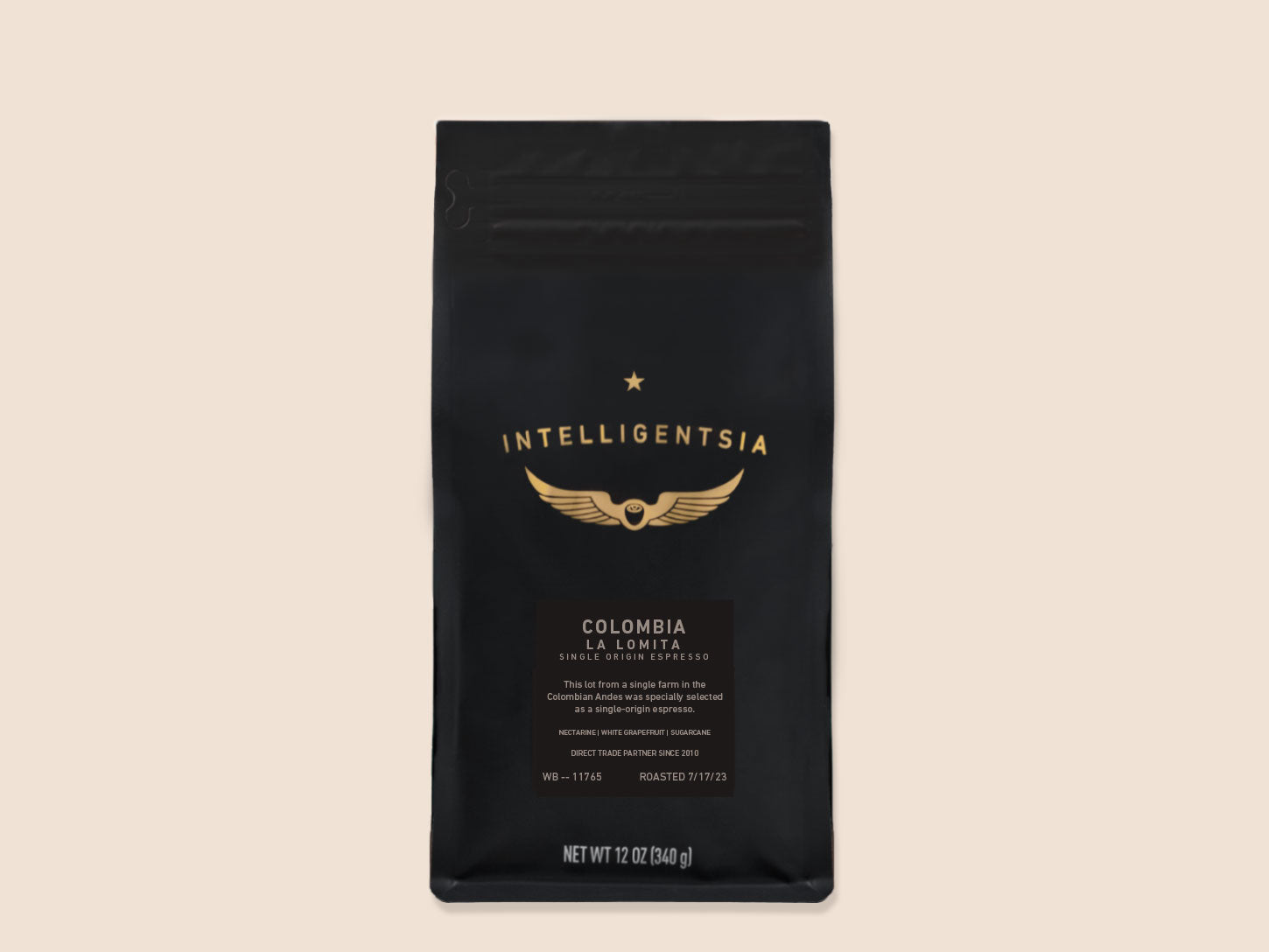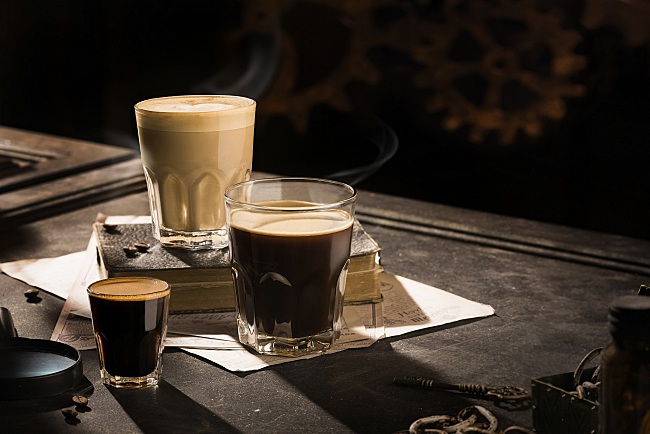Taste the True Quality with Recently Roasted SOE Single Origin Espresso
Taste the True Quality with Recently Roasted SOE Single Origin Espresso
Blog Article
Recognizing Coffee Beans: the Journey From Coffee to Blended Coffee Beans

The Origins of Coffee: An International Perspective
While you may believe of coffee as a contemporary staple, its origins trace back centuries, linking with cultures around the world. The tale starts in Ethiopia, where legend says a goat herder called Kaldi discovered the stimulating effects of coffee beans after discovering his goats romping vigorously after eating them. This triggered rate of interest, causing coffee's infect Arab investors who cherished the brewed beverage. By the 15th century, it reached Persia, Egypt, and Turkey, where coffeehouses became social hubs for conversation and culture.
As trade paths expanded, coffee made its way to Europe in the 17th century, quickly obtaining popularity. Each culture included its one-of-a-kind spin to coffee preparation, enhancing its history.
Cultivation and Harvesting of Espresso Beans
As coffee's journey progressed, the emphasis changed to the farming and harvesting of particular bean varieties, especially those used for coffee. You'll locate that coffee beans commonly originate from Arabica or Robusta plants, each offering unique tastes. The optimal expanding problems include high elevations and abundant, well-drained soil, which boost the beans' quality.
Throughout the harvest, choosing techniques differ. In some regions, employees hand-pick ripe cherries, making sure just the ideal fruit goes to processing. In other locations, mechanical farmers are made use of, especially on bigger ranches. Timing is crucial; you want to harvest when the cherries reach peak ripeness for optimum taste.
When gathered, the beans are prepared for processing, which is vital in establishing their last preference. Recognizing the cultivation and harvesting procedures offers you insight into what goes into your preferred coffee, enhancing your recognition for each and every mug.
Handling Approaches: From Cherry to Bean
Since you have actually discovered gathering coffee beans, let's check out just how those cherries change into the coffee beans you enjoy. You'll see how different harvesting techniques influence taste, adhered to by the necessary steps of fermentation and drying out. We'll damage down the milling and grading process that identifies your coffee's high quality.
Harvesting Methods Explained
When it comes to coffee, understanding harvesting strategies is important, given that they straight influence the flavor and high quality of the beans you take pleasure in. Discerning picking involves hand-picking only ripe cherries, ensuring you get the best high quality beans. Eventually, the selection of collecting strategy can substantially affect your coffee experience, so it's worth knowing just how those beans made it to your cup.
Fermentation and Drying
After harvesting, the next steps in handling coffee beans play a significant function in shaping their taste. You'll discover that fermentation is important, as it helps break down the mucilage bordering the beans, enhancing their taste profile. Depending upon the approach, this process can last from a couple of hours to several days, with differing outcomes based on temperature and moisture.
Sun-drying permits the beans to absorb tastes from the setting, while mechanical drying warranties regular dampness levels no matter of weather. Correct drying is necessary to prevent mold and maintain the beans' top quality, eventually influencing your cup of coffee.
Milling and Grading Refine
As fermentation and drying out set the phase for flavor development, the milling and grading procedure assurances that just the ideal coffee beans make it to your mug. This phase entails getting rid of the external layers of the coffee cherry, consisting of the parchment and husk. High-grade beans receive a greater grade, resulting in a richer coffee experience.
Toasting Techniques: Opening Flavor Prospective
When you roast coffee beans, the method you choose can substantially affect the flavor account. Recognizing the partnership between time, temperature, and roasting strategies is key to exposing the potential of your brew. Let's check out how these aspects come together to produce the best mug.
Roasting Techniques Discussed
While you could believe that all coffee toasting methods produce the same results, the truth is that each strategy exposes unique flavor possibilities in the beans. Drum roasting uses a rotating drum to uniformly disperse heat, enhancing caramelization and generating a well balanced flavor. Air roasting, on the other hand, circulates hot air around the beans, advertising a lighter roast with obvious level of acidity.

Influence On Taste Account
Different roasting techniques not just influence the process but likewise significantly affect the taste account of the coffee beans. When you pick a light roast, you'll experience brilliant level of acidity and floral notes, showcasing the bean's beginning. In contrast, a medium roast equilibriums level of acidity with sweetness, usually exposing chocolatey undertones. Dark roasts, on the various other hand, bring out strong, smoky flavors, in some cases covering up the bean's unique qualities. Each method exposes different oils and substances, leading to a broad variety of flavors. By explore various roasting styles, you can uncover which profiles reverberate with your taste buds. Understanding these nuances assists you appreciate the virtuosity behind your cup of coffee, boosting your general experience with every sip.
Time and Temperature Level Aspects
To release the full flavor possibility of coffee beans, both time and temperature level during the roasting process play considerable duties. When roasting, you'll locate that higher temperatures can rapidly develop tastes, but if you rush it, you may wind up with burnt notes. On the other hand, reduced temperatures permit an extra gradual taste growth, showcasing the beans' special characteristics.

Timing is equally as essential; prolonging the roast also long can cause a loss of level of acidity and illumination, while also brief a roast might leave the beans underdeveloped. Locating that sweet spot requires method and trial and error. By changing these elements, you can expose the rich, intricate flavors concealed look here within each bean, producing a really remarkable coffee experience.
The Art of Blending: Crafting One-of-a-kind Coffee Accounts

Start by selecting a base coffee that offers a strong structure. A bright Ethiopian bean can bring fruitiness, while an abundant Brazilian coffee includes body.
As you blend, keep in mind that each combination narrates. You're not just making coffee; you're developing an experience. Take your time, preference often, and appreciate the trip of finding your signature blend - Single Origin Espresso.
Brewing Methods: How Preparation Impacts Taste
Mixing coffee opens up a domain of taste opportunities, but exactly how you brew that mix can significantly influence your last cup. On the various other hand, a pour-over highlights the coffee's clearness and illumination, excellent for showcasing delicate notes.
Coffee, with its high stress, produces a concentrated shot that emphasizes sweet taste and crema. If you favor a lighter mixture, think about a chilly mixture technique; it yields a smooth, less acidic taste.
Eventually, testing is key. Readjusting variables like water temperature, grind size, and brew time can change your coffee's profile. Embrace the art of brewing to find the flavors concealed in your coffee blends. The right method can elevate your experience to brand-new elevations.
The Future of Coffee: Sustainability and Advancement
As the coffee industry evolves, sustainability and technology are becoming vital for resolving environmental difficulties and meeting consumer needs. You'll discover that more coffee firms are embracing green practices, from sourcing beans fairly to implementing lasting farming methods. These shifts not only assist the world however likewise improve the quality of the coffee you take pleasure in.
You may see developments like naturally degradable packaging and water-saving developing methods that decrease waste. Advanced technology, such as blockchain, is additionally ending up being popular, making certain transparency in the supply chain, which allows you to trace your coffee back to its beginnings.
Furthermore, investing in regional communities and supporting farmers with reasonable trade campaigns cultivates a much more sustainable coffee community. As you sip your following mug, bear in mind that your options can add to a brighter future for coffee. By deciding for lasting brand names, you're not simply taking pleasure in a beverage; you're making a positive effect on the globe.
Regularly Asked Questions
What Is the Difference Between Arabica and Robusta Beans?
Arabica beans are smoother, sweeter, and have a greater acidity, while robusta beans are more powerful, a lot more bitter, and contain more high levels of caffeine. When brewing your coffee., you'll notice these differences in taste and aroma.
Exactly How Does Altitude Affect Coffee Bean Flavor?
Altitude influences coffee bean taste considerably. Higher elevations generate beans with visit this web-site brighter level of acidity and complex tastes, while lower elevations commonly generate beans that are heavier and less nuanced. You'll notice these differences in your cup!
What Are the Health Perks of Alcohol Consumption Coffee?
Consuming coffee can boost your energy, enhance mental focus, and also improve physical efficiency. It's abundant in anti-oxidants, might decrease the danger of specific conditions, and can promote a healthier metabolism when consumed in small amounts.
Can Coffee Beans Be Reused for Brewing?
Yes, you can reuse coffee beans for developing, however the taste could be weak. If you enjoy exploring, attempt recycling them in various means, like cool mixtures or including to shakes for an added kick.
Exactly how Should I Store Coffee Beans for Freshness?
To keep your coffee beans fresh, store them in an airtight container in a cool, dark place. Stay clear of exposing them to light, wetness, or warmth, as these elements can promptly weaken their taste and scent.
Recognizing Coffee Beans: the Trip From Coffee to Blended Coffee Beans.
Now that Continued you've found out about gathering coffee beans, allow's explore exactly how those cherries change into the coffee beans you love.When you roast coffee beans, the method you choose can drastically affect the flavor profile - Single Origin Espresso.While you might assume that all coffee roasting approaches yield the same outcomes, the reality is that each strategy exposes one-of-a-kind flavor capacities in the beans.Different toasting approaches not only influence the process yet likewise considerably affect the flavor profile of the coffee beans
Report this page